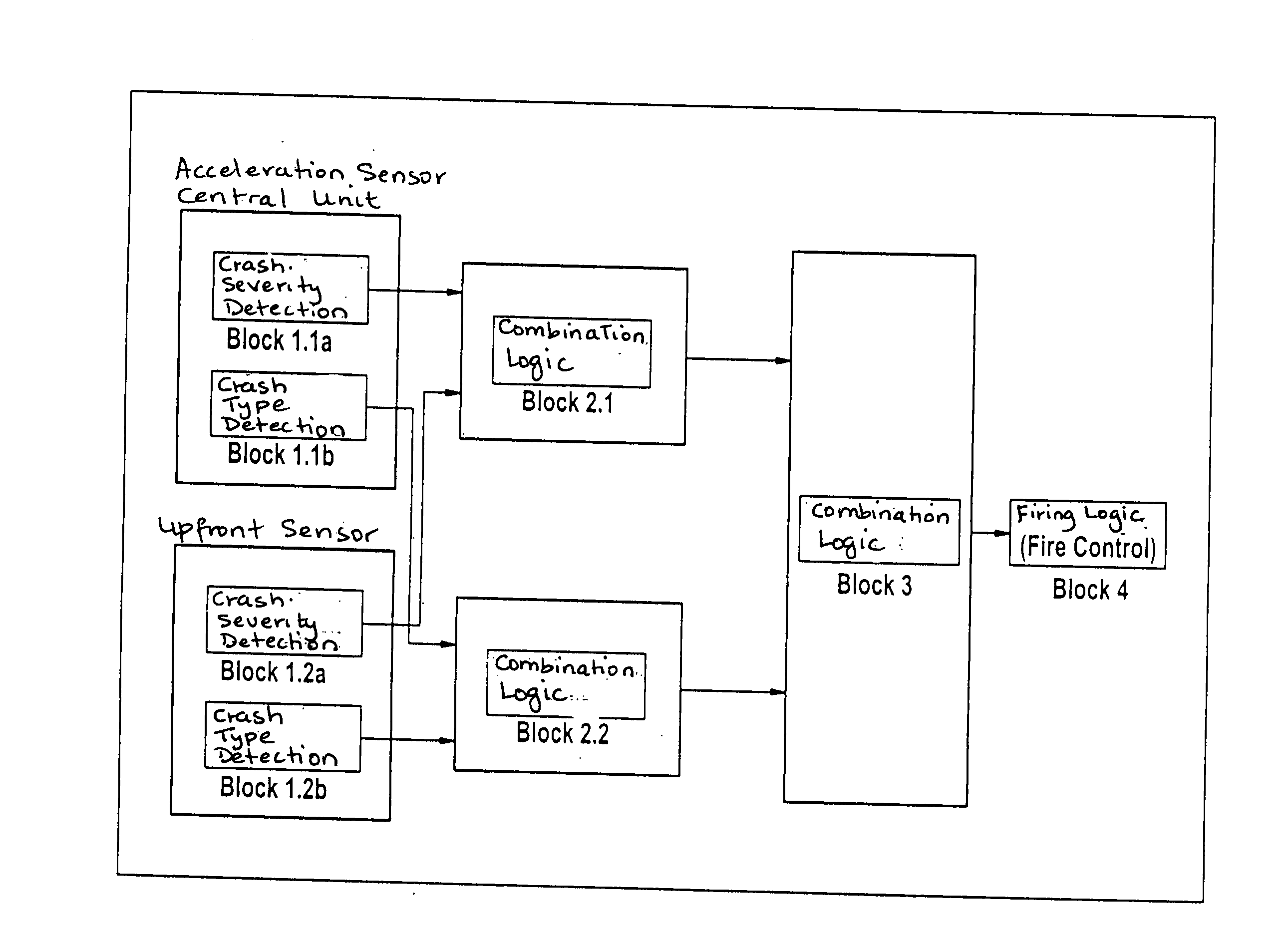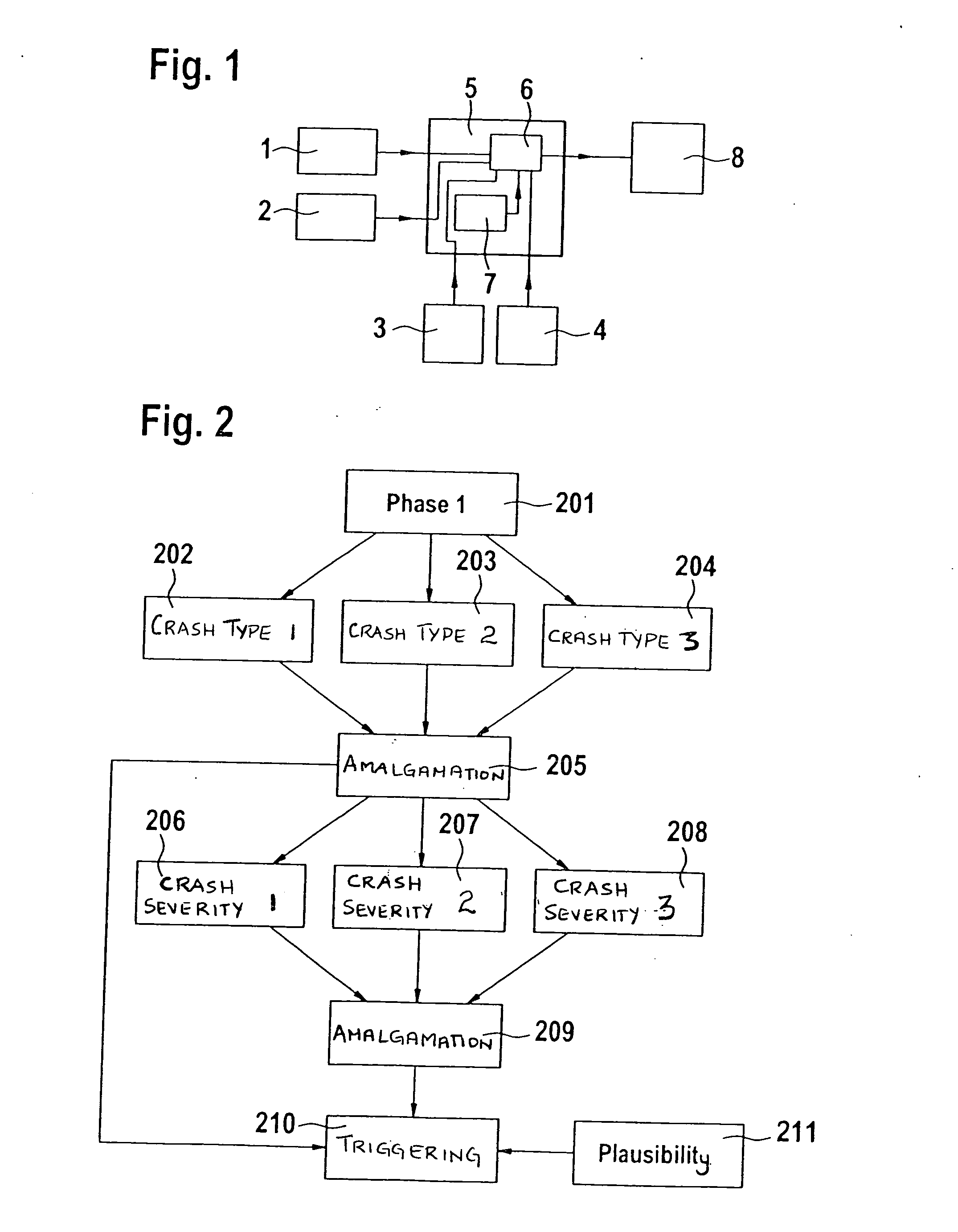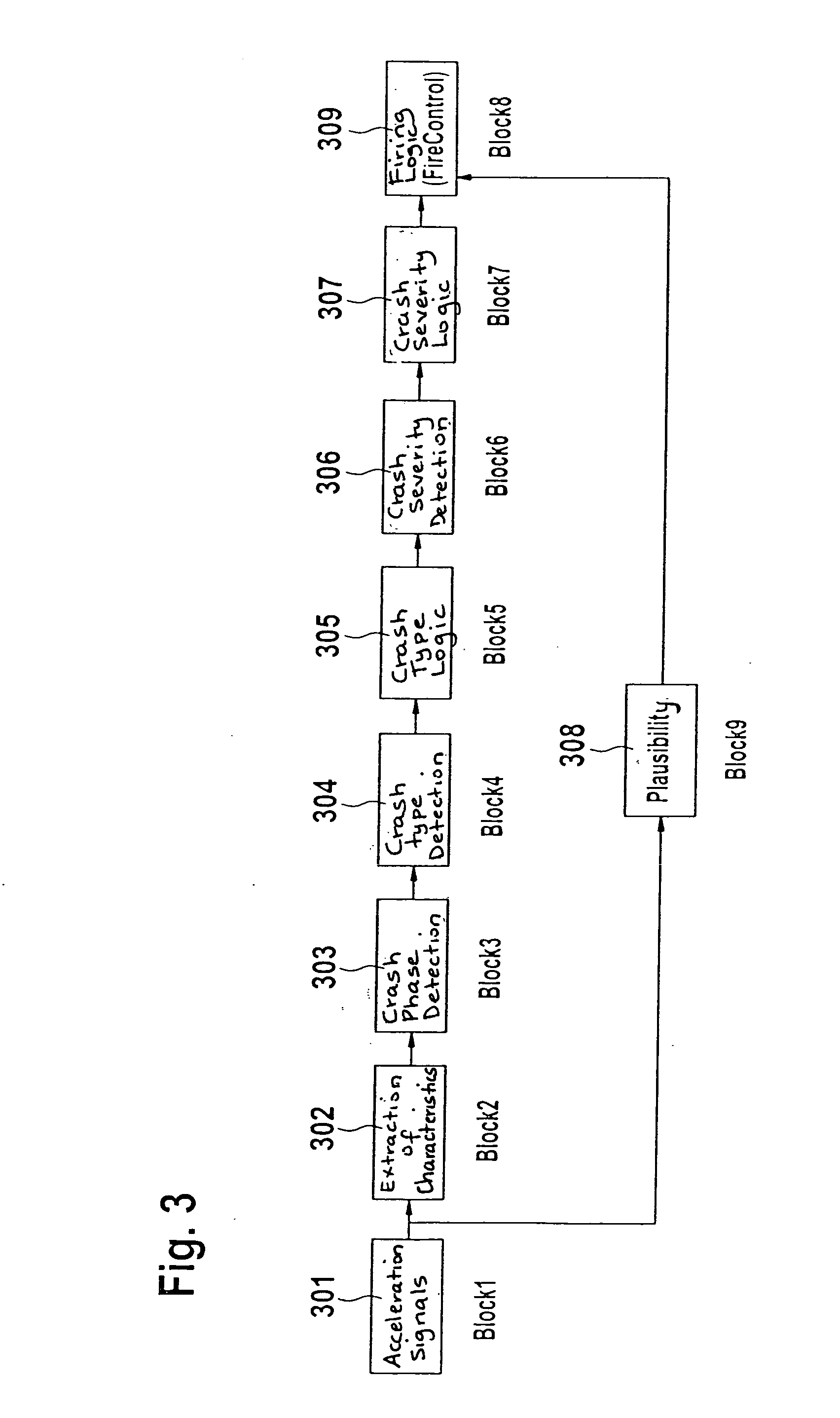Method for activating restraining means
a technology of restraining means and activation methods, which is applied in the direction of pedestrian/occupant safety arrangements, instruments, and tractors, etc., can solve the problems of triggering algorithms that are more difficult and complex, and so as to improve the triggering of restraint devices, improve the reliability of methods, and improve the effect of triggering
- Summary
- Abstract
- Description
- Claims
- Application Information
AI Technical Summary
Benefits of technology
Problems solved by technology
Method used
Image
Examples
example
[0050]CRTotal=CRST_1*Fak 10+CRST_2*Fak 11+…+CRUFS_1*Fak 20+CRUFS_1*Fak 21+…(Σ Faktoren)CRTotal=CRST_1*Fac 10+CRST_2*Fac 11+…+CRUFS_1*Fac 20+CRUFS_1*Fac 21+…(Σ Factors)
[0051] Here, _1 represents the various crash types or crash severities, the prefix indicating the source of the signals.
[0052] As can be seen in FIG. 9, the data from blocks 1.1a through 1.2b are combined in deviation from the basic idea. Block 2 contains the combinations of similar data and block 3 brings these data together to make them available in block 4.
PUM
 Login to View More
Login to View More Abstract
Description
Claims
Application Information
 Login to View More
Login to View More - R&D
- Intellectual Property
- Life Sciences
- Materials
- Tech Scout
- Unparalleled Data Quality
- Higher Quality Content
- 60% Fewer Hallucinations
Browse by: Latest US Patents, China's latest patents, Technical Efficacy Thesaurus, Application Domain, Technology Topic, Popular Technical Reports.
© 2025 PatSnap. All rights reserved.Legal|Privacy policy|Modern Slavery Act Transparency Statement|Sitemap|About US| Contact US: help@patsnap.com



